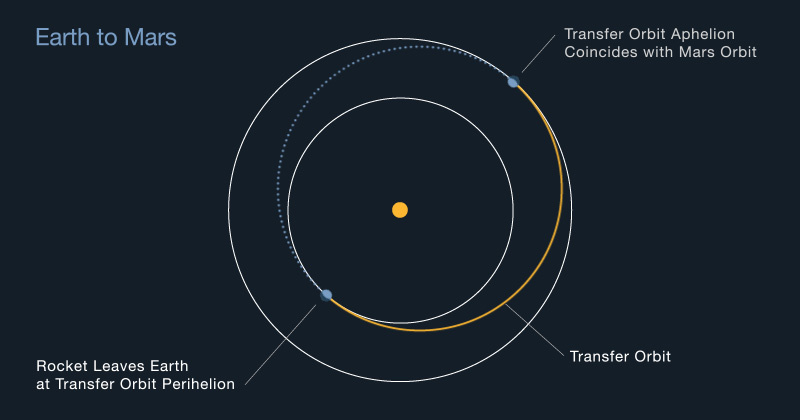
Image courtesy of NASA
 Copyright © Michael Richmond.
This work is licensed under a Creative Commons License.
Copyright © Michael Richmond.
This work is licensed under a Creative Commons License.
It might seem a bit of a coincidence that three different space agencies would choose to launch their missions to Mars within just a few weeks of each other, but there's actually a good reason for it. Because the Earth and Mars orbit the Sun at different speeds, the Earth is alternately catching up to Mars and then leaving it behind. You might think that the best time to launch a probe is when the two planets are closest together, as Earth passes Mars, but that fails to account for one factor: time. Even at its closest approach, Mars is at least 55 million km from the Earth. Our fastest rockets will take months to make that trip -- and during those months, the planets move farther apart.
It turns out that the most fuel-efficient way to send a spaceship from one planet to another is to use what is known as a Hohmann transfer orbit.
The idea is to launch forward from Earth into a gently curving trajectory which will move outward from the Sun, but slow down as it approaches the distance of Mars; slow down just enough so that its aphelion (most distant portion of its orbit from the Sun) occurs at exactly the distance of Mars' orbit. AND, if one chooses the launch time just right, at the moment that the spaceship reaches the distance of Mars' orbit, Mars will be right there.
(Click on the diagram below to start an animation)

Image courtesy of
NASA
So this "Hohmann transfer orbit" is a very special ellipse: its innermost point (perihelion) has the same distance from the Sun as the Earth's orbit, and its outermost point (aphelion) has the same distance from the Sun as Mars' orbit. One of the great things about this orbit is that when the ship reaches Mars, it will be travelling at the same speed as Mars, and in the same direction. That means the ship will require only a little fuel to park itself into an orbit around Mars.
As described in the text of the one-way trip to another planet project, the Hohmann transfer orbit from Earth to Mars takes about 258 days. There are only certain moments when the two planets are located in just the right positions of their orbits that a trip of this duration will leave one and reach the other. These "launch windows" occur at roughly two-year intervals. If one looks at the dates when Mars probes have been (and will be) launched, one can see this pattern clearly.
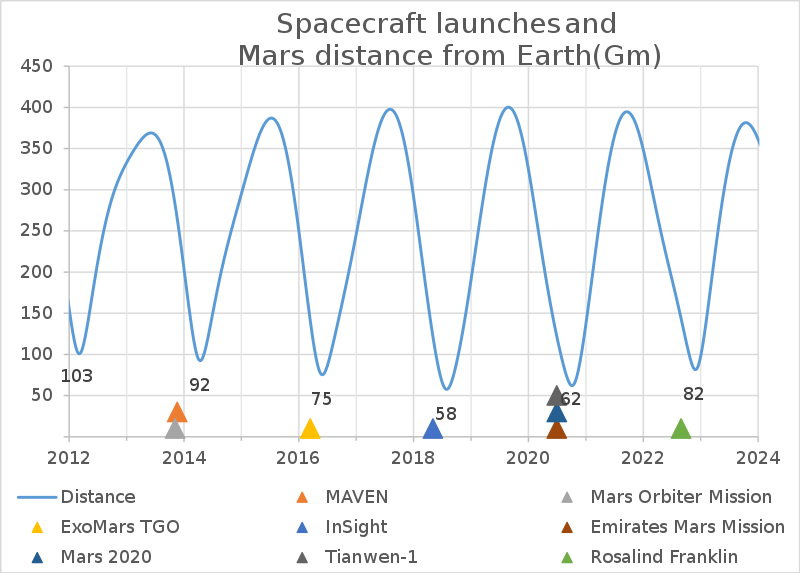
Graphic courtesy of
Wikimedia and
Phoenix7777
The first mission to be launched this year was based in the United Arab Emirates; it is the first interplanetary probe for this country. The mission is actually a collaboration between a number of entities: the United Arab Emirates Space Agency, the University of Colorado at Boulder, and the University of California at Berkeley.
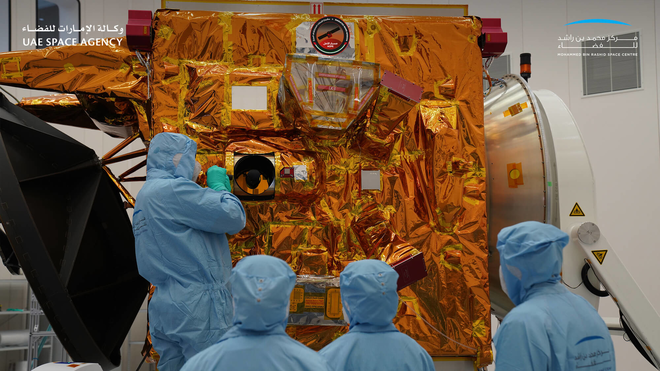
Click to embiggen.
Image courtesy of
UAE Space Agency
This probe is the simplest of the bunch to be launched in 2020. It consists of a single craft which will remain in orbit around Mars. The orbiter carries three main instruments:
The Hope probe was successfully launched by a Japanese booster on July 19, 2020. You can watch a short animation showing a telescope's view of the probe as it coasts through the sky. If all goes well, Hope will arrive at Mars in February, 2021.
Four days after the UAE launched Hope, the China National Space Agency (CNSA) sent its own interplanetry probe into space. Tianwen-1 is an ambitious project, especially for a first attempt at reaching Mars. The craft consists of both an orbiter and a lander, each of which contain a number of scientific instruments.
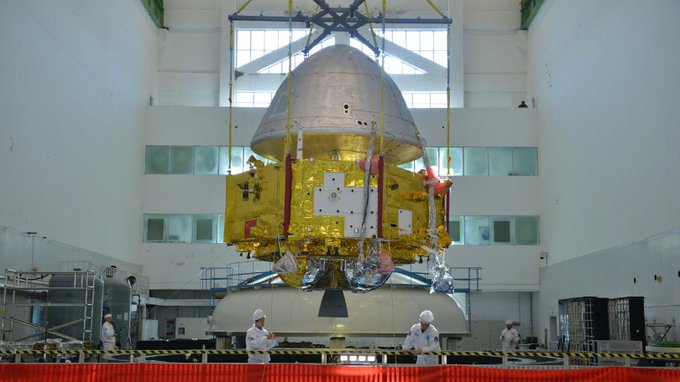
Image courtesy of
CGTN
The orbiting unit has a wide variety of instruments: two cameras for imaging the surface, one with a resolution as fine as 2 meters per pixel; magnetometer, spectrometer and surface radar, to investigate surface properties in other ways; and a pair of instruments to study the particles and magnetic fields sharing the craft's orbit around the planet.
The lander will detach from the orbiter and head to the surface, using three different methods to slow its fall. First, as it enters the atmosphere, a heatshield will slow its progress and protect the rest of the probe from high temperatures. Second, a parachute will pop open in the upper atmosphere, further slowing the descent to about 95 meters per second. Finally, a set of retrorockets will fire to slow the ship further, avoid hazards on the ground (if necessary), and lower the craft to the ground.
The target area is labelled "2" and outlined in red in the figure below. This region, known as "Utopia Planitia", lies within an ancient and very large impact crater.
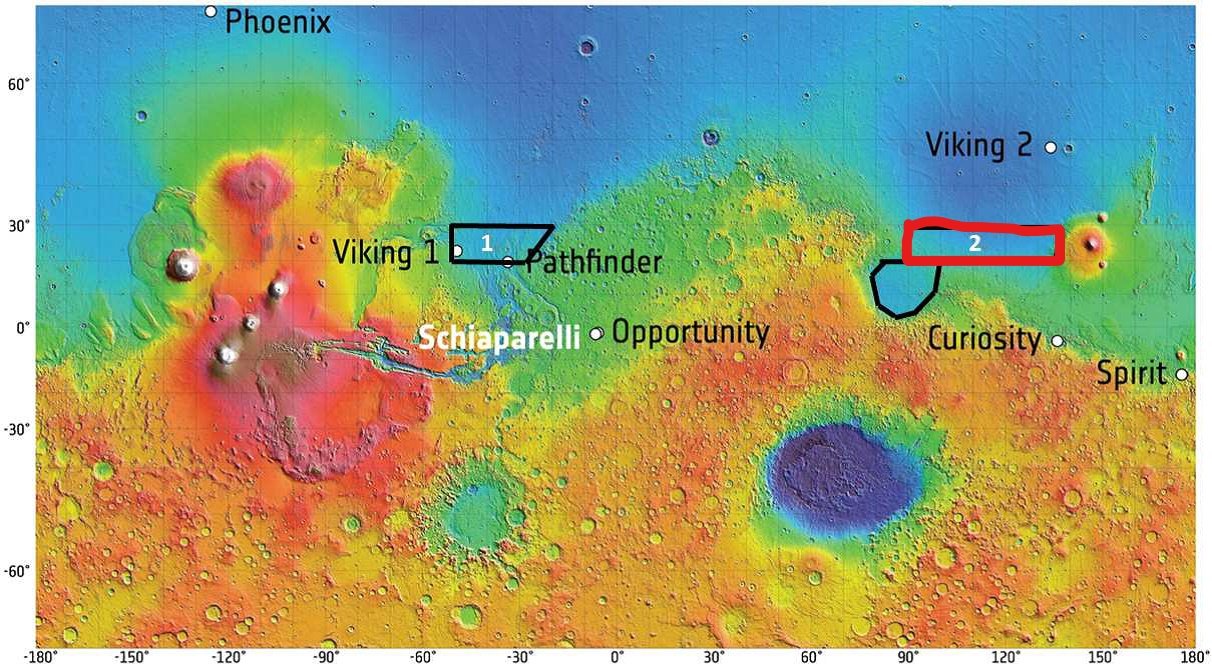
Image courtesy of
Andrew Jones, via Twitter
The American Viking-2 craft landed there back in 1976 and sent back (among many others) this picture showing a very thin coating of water ice covering the ground early one morning. Will Tianwen-1 find hoarfrost, too?
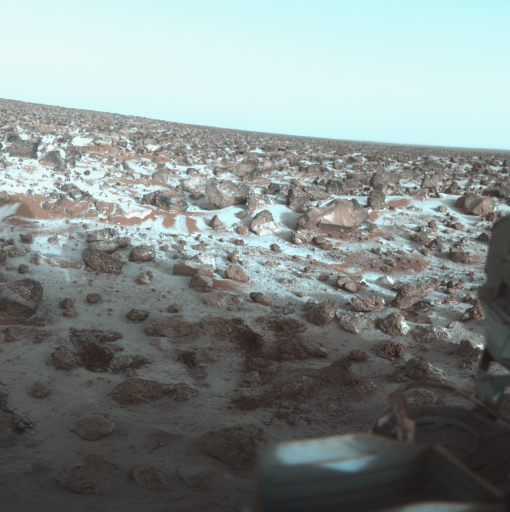
Image courtesy of
NASA and Roel van der Hoorn
If all goes well, a small rover will roll out of the spaceship and travel across the surface. The rover is equipped with several cameras, ground-penetrating radar which can reach 100 meters below the surface, meteorological instruments, and a magnetometer. The baseline lifetime of the rover is 90 days, but the orbiter should last much longer.
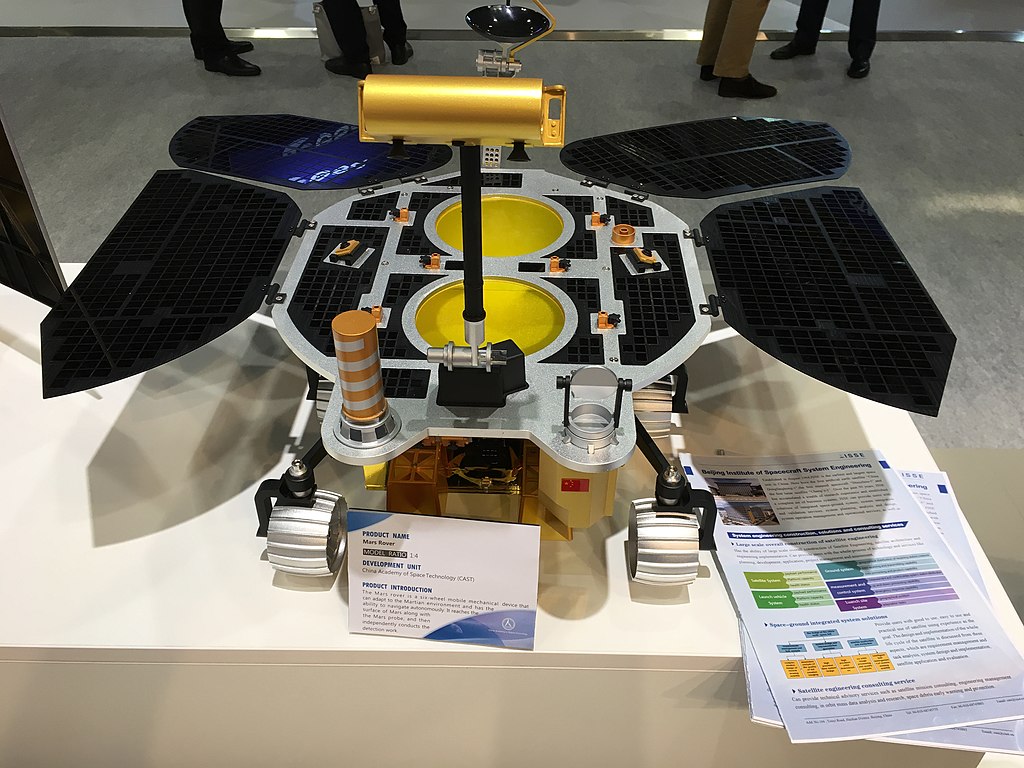
Picture of a mockup of the Tianwen-1's rover,
thanks to
Wikimedia and Pablo de Leon
The final entry in Earth's 2020 Mars sweepstakes is NASA's "Mars 2020" mission, which is scheduled to launch some time between July 22 and August 11. Like Tianwen-1, this project will send a rover to the surface of Mars; but unlike Tianwen-1, it carries no accompanying orbiter. Just the rover.
In order to bring the unit safely down to the surface, NASA is returing to a method it has used successfully before, in the Mars Science Labortary (Curiosity) mission of a decade ago.
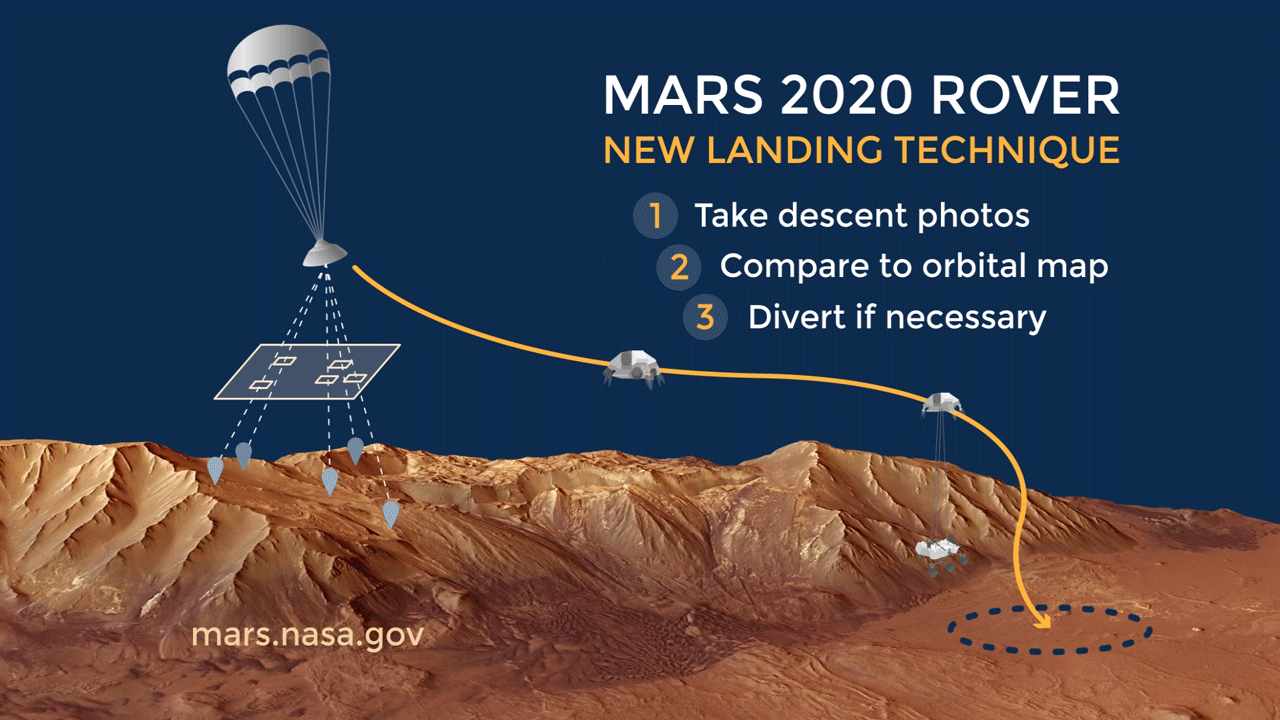
Animation courtesy of
NASA
The "skycrane" technique looks strange, but worked perfectly for Curiosity. There's a nice animation showing the whole procedure at the mission's website.
The rover is powered by a Multi-Mission Radioisotope Thermoelectric Generator (MMRTG), which employs the temperature difference between a warm chunk of plutonium dioxide (encased within layers of material for safety) and the cold outside air to generate electicity. The radioactive decay ought to continue to produce enough power (about 100 watts) to keep the rover going for more than ten years.
Perseverance carries a large suite of scientific instruments. In addition to several cameras and a subsurface radar unit, there are an X-ray spectrometer and an ultraviolet spectrometer which can reveal the elemental composition of rocks and dust on the surface.
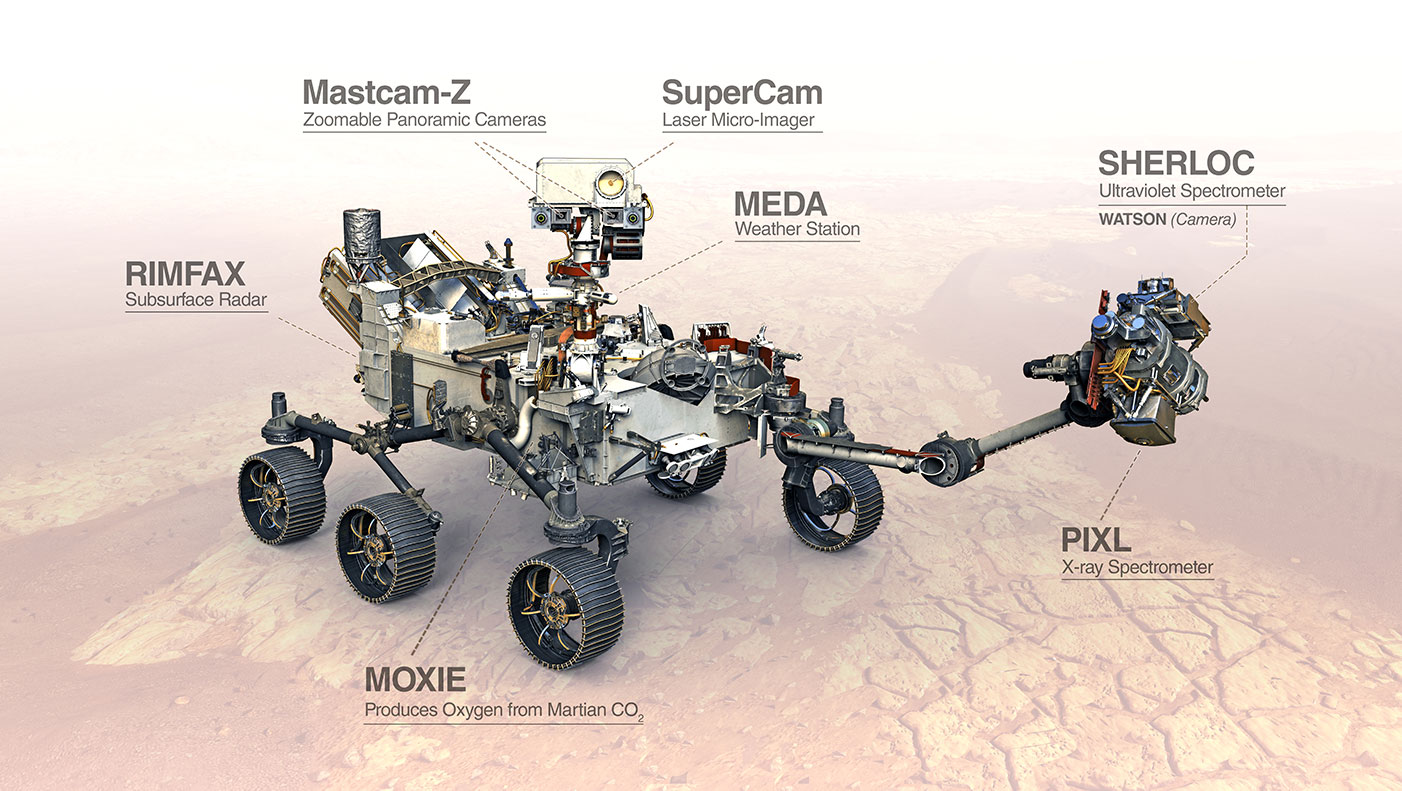
Image courtesy of
NASA
 Copyright © Michael Richmond.
This work is licensed under a Creative Commons License.
Copyright © Michael Richmond.
This work is licensed under a Creative Commons License.